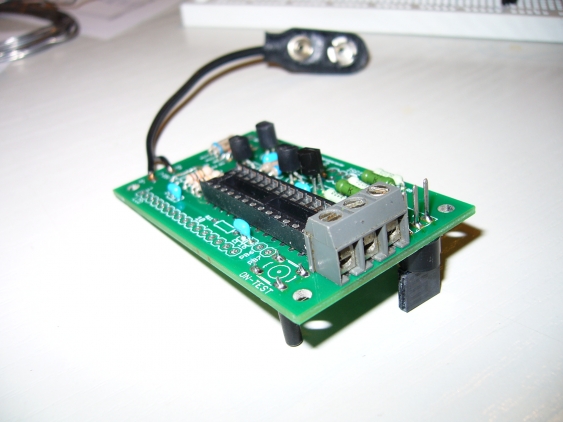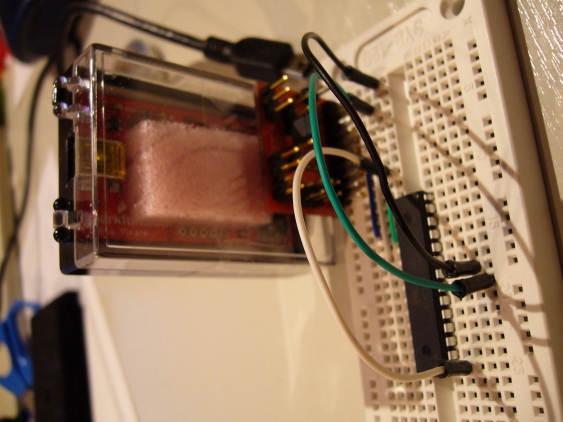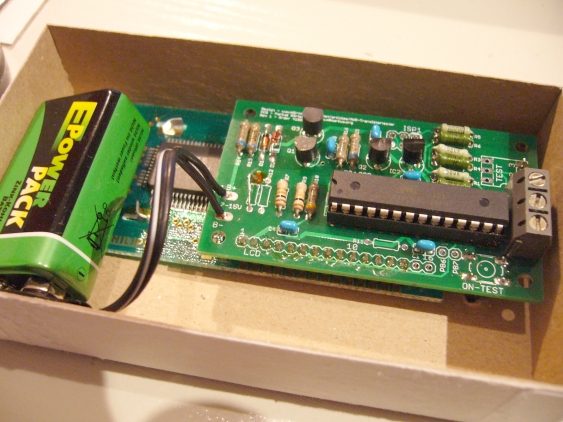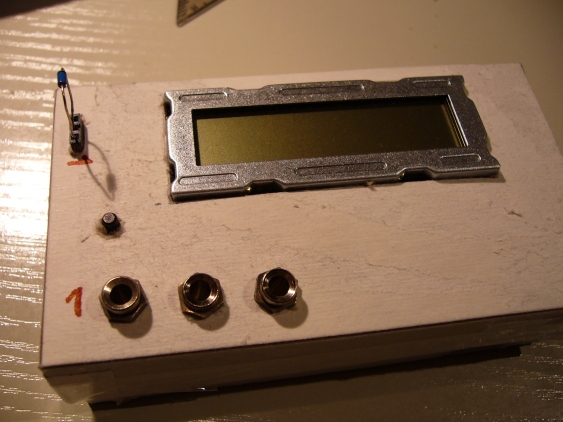Building an AVR transistor tester
I had known about the AVR transistor tester project for quite a while, but did never come around to build one. Doing a proper PCB is still a major undertaking for me…
But when Markus offered to send some his spare PCBs for free, I took my chance. I verified to have all parts available (except for the ATMega8), and the asked for one. It arrived really fast (the swiss post seems to be rather fast), but it proved Ians method of sending PCBs to be the right one:
So I waited for my ATMega to arrive, and collected all parts:
The I went out to solder the board. It uses the smallest available size for all components, which make soldering the resistors quite fun (some of them sit a little bit wild). I found out that 2 resistors are swapped with regard to the schematic (the are originally the same size, but for providing the LCD contrast I needed to bridge one of them so it mattered to me). Since my LCD has a quite unusual pin assignment (pin 1 is in the middle) it was attached to the back of the PCB. Therefore the button and some connectors are also located there.
Since Markus provided multiple locations for the test connectors, I used one for attaching a socket, and the other one for the Jacks. maybe I will use the third one for attaching some fixed wires on the case.
For programming I used by Buspirate again (together with AVRDude), and put everything on a breadboard:
Programming went without hiccups. But when I then tested everything, it didn’t work. The display got somehow initialized, but ended up will all characters black. The tester also didn’t turn off, which it should. So some debugging was in order.
First the supply voltage - check. Next the test outputs - check (all are 0 volts). But strangely the analog voltage reference output was also 0 volts, which it shouldn’t.
Markus suspected that somehow the programming went wrong. So I re-downloaded the firmware from the project page again (before I used the firmware builder), programmed again - check. So somehow the first firmware I used was wrong.
So the last step was building it into a case. I did simply use a small box left used for some samples from Coilcraft
and just added a cutout for the LCD and holes for the connectors:
It’s not the prettiest one, but it works nicely.





